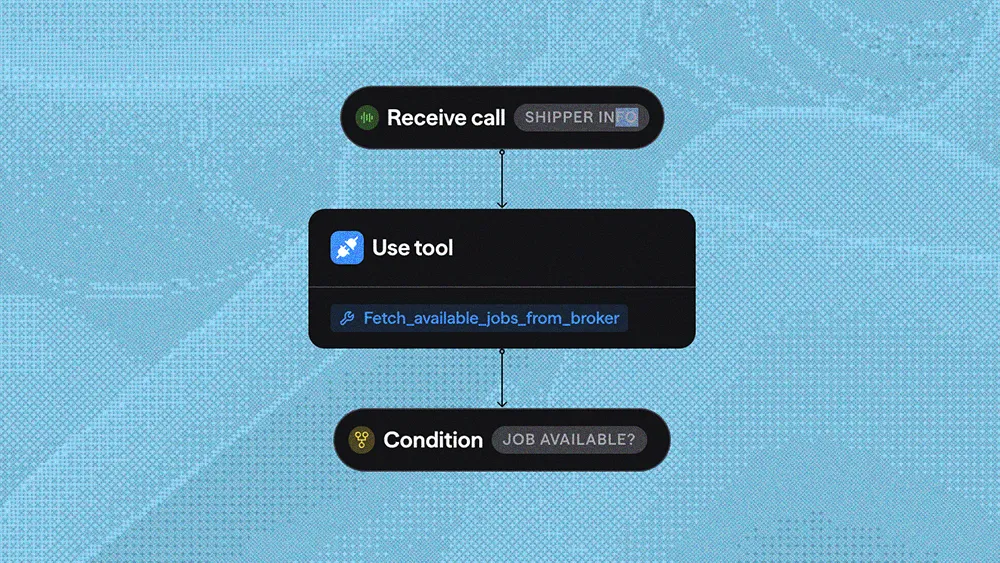
AI-driven productivity has turned individual contributors into “Super ICs,” completing tasks in days that once took weeks.
Abhishek Sharma of Vapi discusses the accelerated pace of AI model releases, which are overturning industry processes in weeks.

With GenAI moving at lightning speed, new tools are reshaping the definition of productivity, originality, even reality in real time. As AI turns individual contributors into ‘Super ICs’, the ground is shifting faster than teams, managers, and systems can keep up.
Abhishek Sharma is a Technical Product Marketing Manager at Vapi, a company creating voice AI agents for developers. With experience at Microsoft and startups like Jobright.ai and RAFA AI, he says the usual productivity benchmarks are already outdated and miss the real story unfolding every quarter.
Chasing Goldilocks: “Every individual contributor, no matter their role, has become a ‘Super IC’,” Sharma says. “They’re pumping out work that two or three people would have done just two years ago. Tasks that took two weeks can now be done in about three days.” That leap in productivity forces a new kind of management math. Sharma says leaders need to find what he calls the “Goldilocks zone.” “If you push too hard, you get burnout or subpar results. If you don’t push hard enough, you’re wasting innovation. Understanding this sweet spot, with AI tools changing every few months, is the key.”
Blink and it’s obsolete: “People still talk about six- or seven-month cycles, but when you actually look at the industry, the pace is way shorter,” Sharma says. The shift isn’t just about speed; it’s about scale. Entire workflows are being upended in weeks, not years, as model releases hit faster and harder than anyone predicted. “Every quarter everything is changing and all the processes are being overturned. Models like DeepSeek, Gemini 2.5 Pro, and new Deep Research models from Perplexity all popped in less than seven months, and suddenly an analyst can do deep analysis in just 15 minutes.”

Same ad, different day: AI has made ad creation easier than ever, but that convenience comes at a cost. “The efficiency of advertisement campaigns has become difficult now because every ad is the same,” Sharma says. The problem isn’t production; it’s originality. With tools like GPT, anyone can replicate a campaign in seconds. “I can just take a copy of Stripe’s recent advertisement and ask GPT to create my own version,” he says. The result is a flood of near-identical content that fuels ad fatigue and makes it harder for brands to stand out, even as the tools make content creation frictionless.
Real or fake?: The flood of AI-generated content is eroding our ability to tell what’s real. Tech insiders may feel confident spotting synthetic media, but Sharma sees that certainty slipping. “What feels normal to us in terms of ‘of course this is an AI-generated video’ might not seem so obvious to somebody who’s not in the field,” he says.
But even the experts are losing their edge. “The line is getting finer and finer. It’s getting more and more difficult for people to differentiate, and soon even the ones who are in this bubble won’t know if this is AI or not.”
Spirited AI: Beyond creation and perception, Sharma points to a thornier issue: intellectual property. As AI models train on massive datasets—sometimes including copyrighted material without consent—the lines around creator rights are blurring fast. He cites a theory about OpenAI training on Studio Ghibli’s style, possibly enabled by Japan’s more relaxed IP laws. The implications, he says, stretch far beyond the art world.
“It’s becoming a very interesting geopolitical situation,” Sharma says, pointing to tensions between national IP protections and global AI ambitions. “Companies like OpenAI and Google are arguing that loosening copyright restrictions is necessary to compete with Chinese models, and that pressure could push countries to lower protections for their own creators.”
AI-driven productivity has turned individual contributors into “Super ICs,” completing tasks in days that once took weeks.
Abhishek Sharma of Vapi discusses the accelerated pace of AI model releases, which are overturning industry processes in weeks.

Vapi

With GenAI moving at lightning speed, new tools are reshaping the definition of productivity, originality, even reality in real time. As AI turns individual contributors into ‘Super ICs’, the ground is shifting faster than teams, managers, and systems can keep up.
Abhishek Sharma is a Technical Product Marketing Manager at Vapi, a company creating voice AI agents for developers. With experience at Microsoft and startups like Jobright.ai and RAFA AI, he says the usual productivity benchmarks are already outdated and miss the real story unfolding every quarter.
Chasing Goldilocks: “Every individual contributor, no matter their role, has become a ‘Super IC’,” Sharma says. “They’re pumping out work that two or three people would have done just two years ago. Tasks that took two weeks can now be done in about three days.” That leap in productivity forces a new kind of management math. Sharma says leaders need to find what he calls the “Goldilocks zone.” “If you push too hard, you get burnout or subpar results. If you don’t push hard enough, you’re wasting innovation. Understanding this sweet spot, with AI tools changing every few months, is the key.”
Blink and it’s obsolete: “People still talk about six- or seven-month cycles, but when you actually look at the industry, the pace is way shorter,” Sharma says. The shift isn’t just about speed; it’s about scale. Entire workflows are being upended in weeks, not years, as model releases hit faster and harder than anyone predicted. “Every quarter everything is changing and all the processes are being overturned. Models like DeepSeek, Gemini 2.5 Pro, and new Deep Research models from Perplexity all popped in less than seven months, and suddenly an analyst can do deep analysis in just 15 minutes.”

Vapi

Same ad, different day: AI has made ad creation easier than ever, but that convenience comes at a cost. “The efficiency of advertisement campaigns has become difficult now because every ad is the same,” Sharma says. The problem isn’t production; it’s originality. With tools like GPT, anyone can replicate a campaign in seconds. “I can just take a copy of Stripe’s recent advertisement and ask GPT to create my own version,” he says. The result is a flood of near-identical content that fuels ad fatigue and makes it harder for brands to stand out, even as the tools make content creation frictionless.
Real or fake?: The flood of AI-generated content is eroding our ability to tell what’s real. Tech insiders may feel confident spotting synthetic media, but Sharma sees that certainty slipping. “What feels normal to us in terms of ‘of course this is an AI-generated video’ might not seem so obvious to somebody who’s not in the field,” he says.
But even the experts are losing their edge. “The line is getting finer and finer. It’s getting more and more difficult for people to differentiate, and soon even the ones who are in this bubble won’t know if this is AI or not.”
Spirited AI: Beyond creation and perception, Sharma points to a thornier issue: intellectual property. As AI models train on massive datasets—sometimes including copyrighted material without consent—the lines around creator rights are blurring fast. He cites a theory about OpenAI training on Studio Ghibli’s style, possibly enabled by Japan’s more relaxed IP laws. The implications, he says, stretch far beyond the art world.
“It’s becoming a very interesting geopolitical situation,” Sharma says, pointing to tensions between national IP protections and global AI ambitions. “Companies like OpenAI and Google are arguing that loosening copyright restrictions is necessary to compete with Chinese models, and that pressure could push countries to lower protections for their own creators.”
© 2025 Bamboo HR LLC. All Rights Reserved. BambooHR® is a registered trademark of Bamboo HR LLC